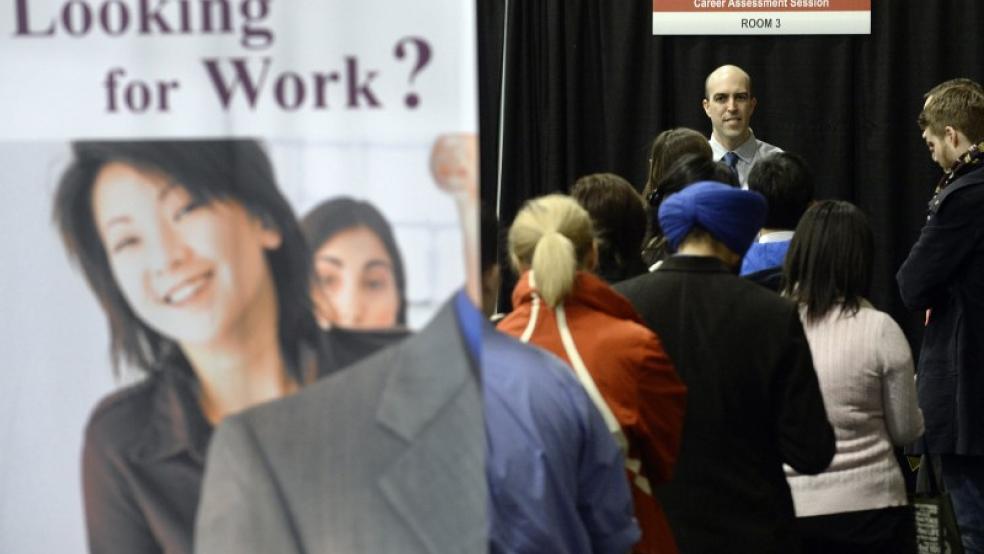Job growth was a bit softer than expected in August, according to government data released Friday. Employers added 142,000 new jobs, falling short of expectations closer to 165,000. The gains for previous months were revised lower, as well, knocking 86,000 jobs off the tally for June and July.
At the same time, the unemployment rate fell a tenth of a point to 4.2%, as expected, as employers rehired workers temporarily laid off in July due to bad weather. Wages continued to grow, rising 3.8% over the previous year, surpassing the inflation rate of 2.9% over the same period.
Overall, the data point to a labor market that is cooling but still relatively healthy as it continues to expand and provide wage growth. “The payroll numbers were weaker than expected, but when you look deeper into the numbers and other economic data which is holding up well, there’s not reason to panic,” said Beth Ann Bovino, chief U.S. economist for U.S. Bank, per The Washington Post.
The White House highlighted the big picture underlying the ongoing recovery. “Thanks to our work to rescue the economy, nearly 16 million new jobs have been created, wages and incomes are rising faster than prices, businesses are investing in America, and millions of entrepreneurs are opening small businesses—acts of hope and confidence in our economy,” President Joe Biden said in a statement. “With inflation back down close to normal levels, it is important to focus on sustaining the historic gains we have made for American workers.”
The Fed gets ready to move: The Friday report set off a new round of speculation about how Federal Reserve officials will react at the meeting of the Federal Open Market Committee in two weeks.
Federal Reserve Governor Christopher Waller said Friday that he thinks the time has come to cut interest rates. “Considering the achieved and continuing progress on inflation and moderation in the labor market, I believe the time has come to lower the target range for the federal funds rate at our upcoming meeting,” he said in prepared remarks delivered at the University of Notre Dame.
Waller said he was open to multiple cuts this year, or larger cuts, to be determined by the economic reports. “If the data supports cuts at consecutive meetings, then I believe it will be appropriate to cut at consecutive meetings,” he said. “If the data suggests the need for larger cuts, then I will support that as well.” Waller noted that he was “a big advocate” of large rate hikes when inflation accelerated in 2022 and would advocate large cuts now “if that is appropriate.”
Federal Reserve Bank of New York President John Williams also endorsed cuts Friday. “With the economy now in equipoise and inflation on a path to 2%, it is now appropriate to dial down the degree of restrictiveness in the stance of policy by reducing the target range for the federal funds rate,” he said in a speech at the Council on Foreign Relations in New York.
Williams said he wants to get interest rates back to a “more normal level” — though he added that there is some uncertainty as to what that might mean. “I’m not sure what that more normal level is and I’m not sure at all about how long that should take,” he said.
One key question in the months ahead is whether Fed officials see “normal” as meaning neutral, with interest rates neither restricting nor encouraging growth. Many on Wall Street are hoping that the Fed takes a more expansive approach, cutting rates with the goal of boosting growth. Investors now largely expect the Fed to slash rates by at least 1 percentage point by the end of the year.
What the experts are saying: The economy appears to be returning to something like normal as it downshifts from its post-pandemic high. “This report does not indicate that we’re taking another step toward a recession, but we’re still seeing further signs of cooling,” Sam Kuhn, an economist with the recruitment software company Appcast, told The New York Times. “We’re trending more closely to a 2019 labor market, than the labor market in 2010 or 2011.”
University of Michigan economist Justin Wolfers said the August numbers didn’t change the existing narrative of a slowing but still decent labor market. “There’s nothing in this report that would turn optimists pessimistic,” he said, per The Wall Street Journal. “Would it turn pessimists optimistic? I think the answer to that is no.”
Raymond James Chief Economist Eugenio Aleman said he thinks the report sets the table for a 25-basis point rate cut later this month. “It is clear that the employment market is slowing down, and the Fed has to start to move,” he told Reuters. “But the sky is not falling, the floor is not shaking ... and making a 50-basis-point cut will send an incorrect signal to the market” that the economy is falling apart, he said. “And they don't want to do that.”
Economy
Job Market Shows Signs of Further Cooling, Teeing Up Fed Rate Cut

Aaron Harris



